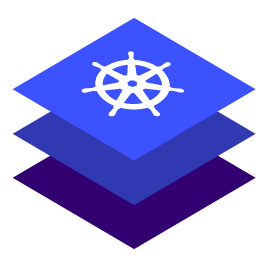Platform Application Deployment
Deploy platform applications to attached clusters using the CLI
This topic describes how to use the CLI to enable an application to deploy to attached clusters within a workspace.
See Workspace Platform Applications for a list of all applications and those that are enabled by default.
To use the DKP UI to enable applications, see Customize a workspace’s applications. To deploy an application to selected clusters within a workspace, refer to the cluster-scoped configuration section.
Prerequisites
Before you begin, you must have:
A running cluster with Kommander installed.
Determine the name of the workspace where you wish to perform the deployments. You can use the
dkp get workspacescommand to see the list of workspace names and their corresponding namespaces.Set the
WORKSPACE_NAMESPACEenvironment variable to the name of the workspace’s namespace where the cluster is attached:BASHexport WORKSPACE_NAMESPACE=<workspace_namespace>Set the
WORKSPACE_NAMEenvironment variable to the name of the workspace where the cluster is attached:BASHexport WORKSPACE_NAME=<workspace_name>
From the CLI, you can enable applications to deploy in the workspace. Verify that an application has successfully deployed via the CLI.
Create the AppDeployment to Enable the Application
If you have already created an AppDeployment and you only want to edit the configuration to customize your application, refer to the AppDeployment Customization instructions. If you want to enable or customize your application on selected clusters within a workspace, refer to the cluster-scoped configuration instructions.
Review the list of available applications that can be enabled to deploy to your cluster. Copy the app name of the application you want to deploy.
Enable a supported application to deploy to your existing attached or managed cluster with an AppDeployment resource:
Run the following command and define the
--appflag to specify which platform application will be enabled:CODEdkp create appdeployment istio --app istio-1.14.1 --workspace ${WORKSPACE_NAME}
The
--appflag must match theAPP NAMEfrom the list of available platform applications.Observe that the
dkp createcommand must be run with theWORKSPACE_NAMEinstead of theWORKSPACE_NAMESPACEflag.
This instructs Kommander to create and deploy the AppDeployment to the KommanderClusters in the specified WORKSPACE_NAME.
Verify Applications
The applications are now enabled. Connect to the attached cluster and watch the HelmReleases to verify the deployment. In this example, we are checking if istio got deployed correctly:
kubectl get helmreleases istio -n ${WORKSPACE_NAMESPACE} -wYou should eventually see the HelmRelease marked as Ready:
NAMESPACE NAME READY STATUS AGE
workspace-test-vjsfq istio True Release reconciliation succeeded 7m3sSome supported applications have dependencies on other applications. See Workspace Platform Application Dependencies for that table.
